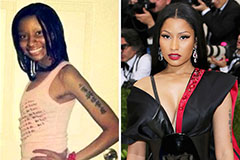Hormonal acne is characterized by clogged pores and oily skin that typically shows up on the chin and jawline. It happens when hormonal adjustments activate inflammation and microbial overgrowth within hair roots.
Outbreaks might look like whiteheads, blackheads, papules or pustules and cysts or blemishes in a lot more extreme instances. It is extra usual in teenagers experiencing the age of puberty yet can influence grownups of any age.
What Creates Hormone Acne?
While acne can be brought on by a variety of factors, consisting of making use of hair and skin treatment items that aren't oil-free or made with active ingredients that can obstruct pores, hereditary proneness, diet regimen,2 and stress and anxiety, the origin is rising and fall hormonal agents. Hormone acne takes place when the body experiences hormone modifications and changes that cause an overflow of sebum, which triggers inflammation, enhanced growth of microorganisms and adjustments in skin cell task.
Hormone acne is commonly located on the reduced jawline, cheeks and neck however can appear anywhere on the body. It is characterized by blemishes that are cystic, unpleasant and filled with pus or various other product. It is additionally most likely to happen in ladies than men, especially throughout the age of puberty, the menstruation, pregnancy or menopause.
Age
While numerous kids experience acne at some time throughout adolescence, it can continue to plague grownups well right into their adult years. Referred to as hormonal acne, this form of outbreak is connected to changes in hormones and is generally most common in females.
Hormone acne occurs when oil glands produce way too much sebum, which obstructs pores and catches dead skin cells. This results in the development of imperfections, such as whiteheads, blackheads and papules, pustules, cysts or nodules, deep under the surface.
This sort of imperfection usually creates pain, redness and swelling. It might likewise be cyclical and show up around the exact same time each month, such as right before your duration begins. This is because degrees of women hormones like progesterone and oestrogen fluctuate with each menstrual cycle.
Menstrual Cycle
Hormonal acne generally appears in the lower part of your face, along the jawline and cheeks, as whiteheads, blackheads or inflammatory acnes (pimples and cysts). It's probably to appear around the moment when your menstruation adjustments.
Particularly around ovulation, when estrogen and progesterone levels get on the rise, hormonal agent changes can cause outbreaks. Yet it's likewise possible to get acne at any kind of factor during your 28-day menstruation.
If you observe that your hormonal acne flare right before your period, attempt discovering when exactly this takes place and see if it associates with the phases of your 28-day menstruation. This will aid you identify the root causes of your skin problems. For instance, you may intend to service balancing your blood sugar level and eliminating high-sugar foods, or consider a prescription drug like spironolactone that can control your hormones.
Maternity
Growing a child is a time of dramatic hormone modifications. For several females, this consists of a flare-up of hormonal acne. This sort of breakout usually begins in the very first trimester, around week six. It's triggered by hormone rises that stimulate sweat glands to make more oil, which can obstruct pores and cause even skin lab more bacteria to build up.
Outbreaks may likewise occur as a result of pre-existing problems like polycystic ovary syndrome, which can additionally be an issue while pregnant and menopause. Likewise, some sorts of birth control pills (such as Ortho Tri-Cyclen and YAZ) can trigger hormone acne in some women.
Luckily, many acne therapies are "no-go" for pregnant females (including preferred acne-fighting components such as isotretinoin and spironolactone). But if you can not prevent those irritating bumps, your doctor might recommend dental erythromycin or cephalexin, which are safe while pregnant.
Menopause
As women come close to menopause, the estrogen levels that triggered their hormone acne to flare throughout puberty start to support and lower. At the same time, however, a spike in androgens (additionally known as male hormonal agents) takes place due to the fact that these hormones can not be converted into estrogen as successfully as before.
The extra of androgens can cause oil production by the sweat glands, which clogs pores. When the blocked pores come to be inflamed and inflamed, an acne types.
Hormone acne is typically seen on the face, especially around the chin and jawline, yet it can occur on the neck, back, shoulders, or breast. This sort of acne tends to flare in an intermittent pattern, similar to the menstruation. Tension, which raises cortisol and throws hormones out of equilibrium, also contributes to the outbreaks.

 Shaun Weiss Then & Now!
Shaun Weiss Then & Now! Mike Vitar Then & Now!
Mike Vitar Then & Now! Barry Watson Then & Now!
Barry Watson Then & Now! Sam Woods Then & Now!
Sam Woods Then & Now! Nicki Minaj Then & Now!
Nicki Minaj Then & Now!